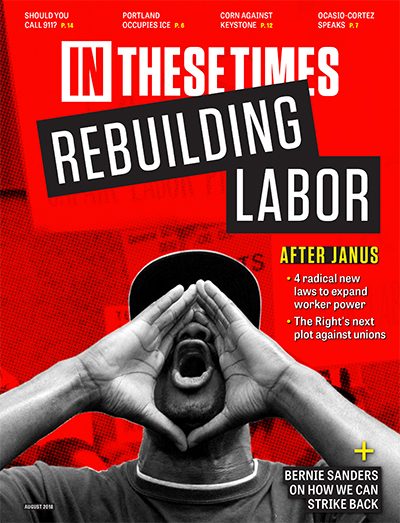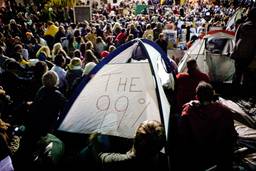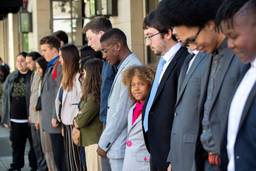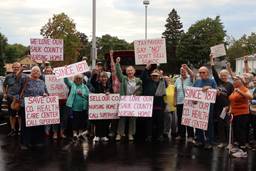How Portland Occupiers Shut Down ICE
Protesters kept the facility closed for 10 days. Although federal police reopened it June 28, occupiers say, “The camp is not going anywhere.”
Arun Gupta
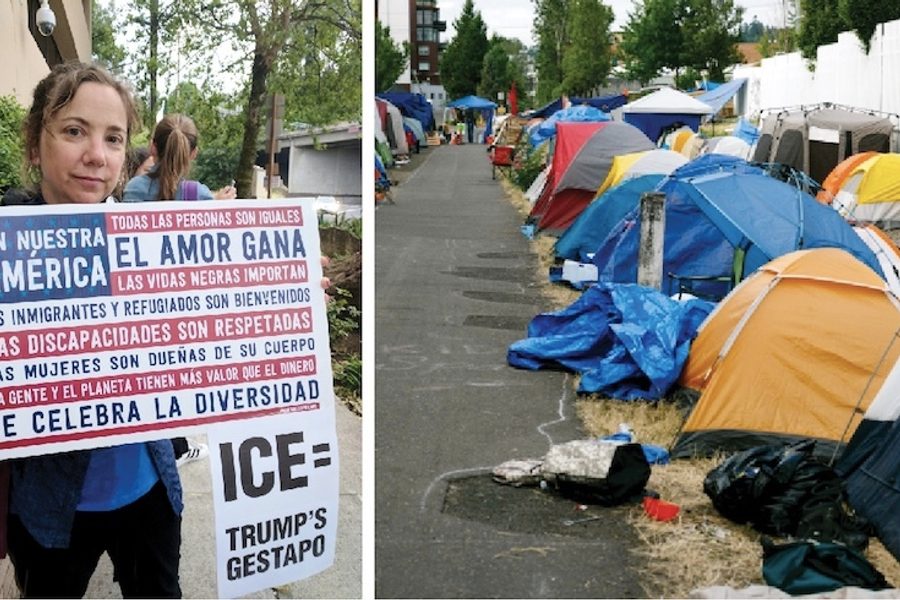
PORTLAND, ORE.—Ali King, 48, is standing outside Portland’s Immigration and Customs Enforcement (ICE) facility with a protest sign for the fourth day in a row. She’s president of Nasty Women Get Shit Done, a local resistance group that sprung up after Trump’s election. “We can’t tolerate ICE,” she says. “It’s kidnapping children.”
King and her eldest daughter are lending support to hundreds of protesters who’ve banded together as #OccupyICEPDX and shut down the ICE facility since June 18, in one of the most successful protests against Trump’s family separation policy.
The occupation began spontaneously after a half-dozen people who attended a Father’s Day protest at the ICE building camped overnight. By the next day, dozens had arrived, and about 20 protesters peacefully blocked the vehicles of ICE employees as they left work.
Three Department of Homeland Security (DHS) officers threatened to arrest anyone who blocked cars. Apart from a lone arrest the next day, the threat turned out to be a bluff.
Portland police could have swept protesters aside easily, as they did during an ICE protest in October 2017, except they were nowhere to be seen. Mayor Ted Wheeler tweeted he didn’t want to see police “sucked into a conflict.” He called the separation policy an “abomination” and indignantly cited Trump administration threats to arrest mayors of sanctuary cities like Portland. In a conversation witnessed by reporter Jason Wilson, senior mayoral advisor Berk Nelson told two police officers that if police were seen protecting ICE employees, “then all of a sudden we’re complicit in baby killing.”
On the third day of the occupation, a dozen DHS officers in riot gear escorted more than 20 ICE employees out of the building into waiting vans. The facility had been shut down.
Within a week, a mini-society blossomed outside. More than 50 tents sprung up, along with a kitchen, child-care center, first-aid tent, pantry with everything from baby food to menstrual products, and outdoor living room that hosts Shabbat rituals. This being Portland, a pizza owner hand-delivered seven pies, and one evening, an acclaimed Southern-style restaurant served roasted game hens.
It could be Occupy Wall Street. Except, as local organizer Nick Neumann, 39, says, “It feels a lot more strategic. There are a lot more Black and brown people. We know who the wack-a-doodles are. A lot of people are newly concerned because of the policy of separation, and this is a space for radicalization.”
When Ali King is asked about criticism that liberals didn’t protest Obama’s mass deportations, King replied, “It’s true. It was white privilege. Things were going well for us and we got complacent.” Nasty Women Get Shit Done, which draws more than 100 people at its meetings, “encourages members to go out and do things. Don’t just post on Facebook.” King’s sign includes a flyer that reads, “ICE = Trump’s Gestapo.”
Some of the more radical occupiers believe the presence of people like King helped deter arrests. They joke, “The liberals are our human shields.” They could be talking about two registered nurses in their 60s hanging out with youth garbed in punk-casual: black tees, torn shorts, piercings, tats. One of the nurses says, “The United States is culpable for what is going on in these countries” and mentions Hillary Clinton’s role in the U.S.-backed coup in Honduras.
On June 28, after the facility had been shut down for 10 days, dozens of DHS police swooped in shortly after dawn and cleared the front entrance of the ICE building of protesters, arresting eight people, seven of whom were charged with misdemeanors. While DHS police reopened the facility, it took them more than a day to clear protesters from a road alongside the building because of limits to their jurisdiction. That night, about 400 people gathered for a vigil, and dozens stayed in the streets all night, peacefully facing off against police.
Occupiers say civilian vehicles returned to the ICE facility on Friday. The Occupy camp remained, as it sits on land controlled by local and state government agencies. Luis Marquez, who has been with #OccupyICEPDX since it began, says, “The camp is not going anywhere. We are here.” There was no indication that vans and buses used for detaining and transporting arrested immigrants were in operation, and calls to ICE for comment had not been returned as of press time.
Portland’s example has spread to other cities, with protesters occupying, blockading and camping outside ICE offices in New York, Los Angeles, Chicago, Detroit and Tacoma.
Ruben Lopez, 40, a construction worker and professional photographer, chanced upon a solidarity rally at City Hall.
Lopez came over undocumented with his mother from Guatemala City at age 12. He says the photographs of children in cages threw him back to the time he was detained in a boy’s home in Guatemala, where he would cry himself to sleep. Thick as a linebacker and sporting a head tattoo that reads, “Trust no one,” Lopez says the photos made him feel “helpless.”
On the edge of the City Hall protest, Lopez shoots black-and-white photos. “A lot of Hispanic people have faced racism by white people,” he says. “Ninety-five percent of the people here are white, and I wanted to document this. I wanted to show, ‘Here’s white people fighting for our kids.’ ”
